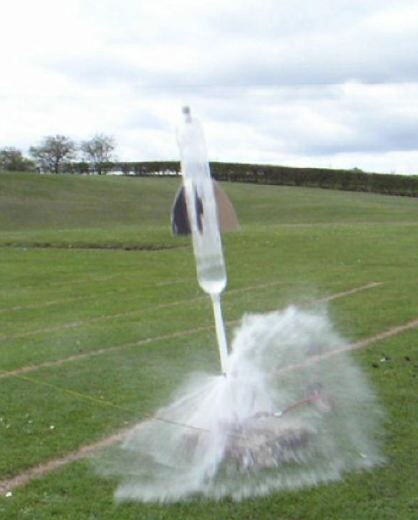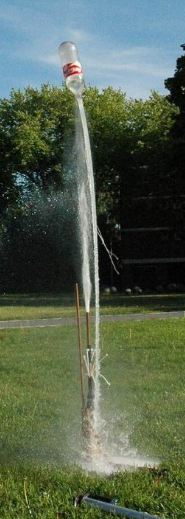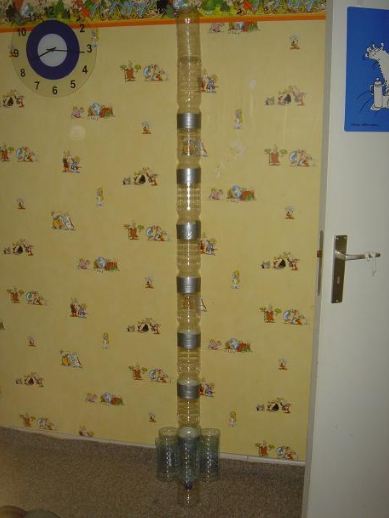Water rockets are quite similar to the model rockets, although it works a little different. These rockets were based on Newton’s Third Law of Motion, in which the water was forced out at the bottom of the rocket. Also, water rockets are powered by both air and water pressure instead of chemical propellants that were commonly used by model rockets.
However, much like the model rocket, these cool water rockets are also fun toys for people of all ages. In fact, since it has also become a hobby, water rocket enthusiasts have created several various designs with different levels of forces. Interestingly, most water rockets were made out of soft drink plastic bottles. Other vessels were used besides plastic bottles, such as plastic pipes, pressure-resistant cylindrical containers, and polycarbonate fluorescent tubes.
The Elements Involved in Creating a Water Rocket
Bottle as the Body: As was aforementioned, Soft drink bottles usually serve as the vessel or the body of the rocket. It is created by cutting several bottles and joining them using duct tape. If a single-stage rocket is to compared with a multi-stage rocket, a single-stage rocket will be much easier to assemble since it will only be involving one stack of plastic bottles or vessels.
Gas or Pressurized Air: There are many ways to pressurized a water rocket, and these include using an air compressor or bicycle pump. Bottles with gases should be well taken care of since compressed gases are much likely to cool when they expanded. With that, water rocket components will cool as well. It is also important to note that some materials like ABS and PVC become weak and brittle when they are severely cooled.
Fins: Fins are necessary as it helps stabilize the water rocket when the propellant level goes down. Since the center mass moves downward after the initial movement, it reduces the stability of the water rocket causing it to tumble. Fins work so that the rocket can have a smooth glide as it flies under its momentum.
Nozzles: These nozzles you see in water rockets are designed to help stabilize the rocket, causing it to spin. Nozzles vary and have two main classes in which we can classify as open and restricted nozzles. The first one is the open nozzle or the standard nozzle, which has an opening diameter of 22 millimeters. The second one is the restricted nozzle which is much smaller than the standard one since it has an opening of about 9-millimeter in diameter.
Launch Tubes: Some water rockets use launch tubes. These launch tubes are anchored to the ground and fit inside the rocket’s nozzle. As the rocket accelerates upward, the launch tubes slightly block the nozzle, ejecting a small amount of water. Moreover, as it continues to accelerate higher, the rocket will leave the launch tubes that are anchored to the ground. This process allows converting potential energy in the compressed air to a kinetic one.
How Does It work?
Do-It-Yourself water rockets can definitely be made inside the comfort of your backyard. But you will be needing some assistance as well as preventive measures in conducting the experiment. Usually, in creating water rockets, plastic bottles were partly filled with water and are sealed. Afterward, it is then pumped with pressurized gas using an air compressor or bicycle pump.
The most crucial element to note in making this type of rocket is the water and pressurized air or gas. If these were combined, the gas would provide a means in storing the energy, while the water provides force after it ejected from the nozzle. Sometimes, additives like salt are added to enhance the density and to create a higher specific impulse. Additionally, soap is also used to create dense foam in order to increase the duration of thrust.
Meanwhile, the seal of the nozzle is then released as the water is expelled and the propellant has been used up. When the rocket shoots up above, the air inside the rocket also drops to atmospheric pressure. The flight duration and altitude of the rocket will depend on the volume of water inside the bottle, the size of the nozzle, the initial pressure, as well as the unloaded weight of the rocket itself.


